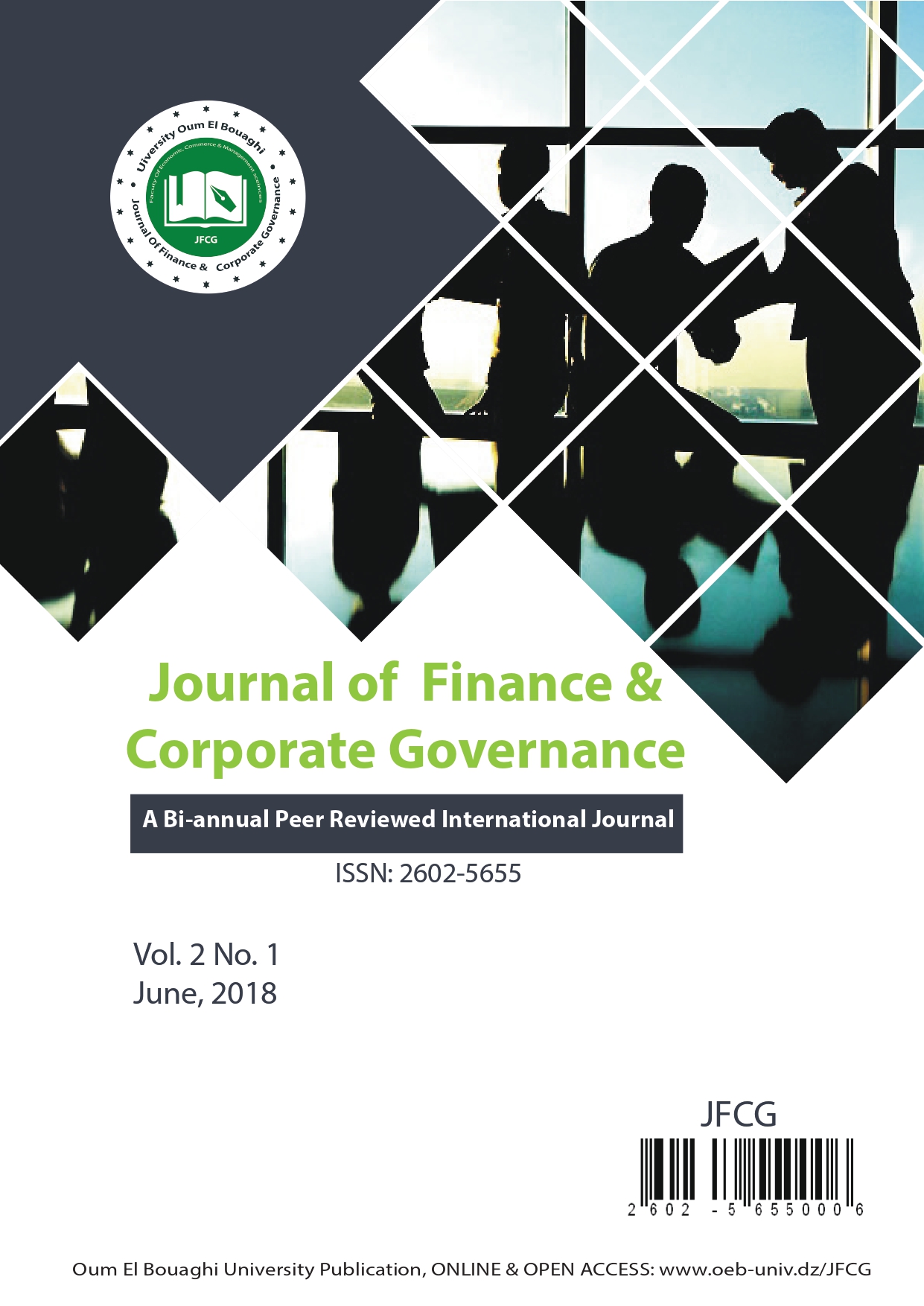دورات الأعمال في الاقتصاد الجزائري: مقاربة Bayesian DSGE
DOI:
https://doi.org/10.54960/jfcg.v2i1.20الكلمات المفتاحية:
business cycle، structural shock، DSGE model، Algeriaالملخص
الهدف الرئيسي من هذه الورقة هو تسليط الضوء على أهم الصدمات التي تقود دورات الأعمال في الاقتصاد الجزائري. من خلال تقنيات التقدير الباييزي، نقدر نموذج توازن عام عشوائي ديناميكي (DSGE) باستخدام أربع سلاسل زمنية للاقتصاد الكلي الجزائري. من خلال هذا النموذج المقدر، الذي نجح في التقاط ديناميكيات بيانات الاقتصاد الجزائري، توصلنا إلى ثلاث نتائج رئيسية: أولا، أهم أسباب تقلبات دورات الأعمال في الاقتصاد الجزائري هي صدمات الطلب الكلي. ثانيا، تلعب صدمة الإنفاق الحكومي أهم دور في تقلبات الناتج. ثالثا، تظهر النتائج التجريبية أدلة على وجود اتجاهات دورية في سياسات الانفاق الحكومي.
التنزيلات
المراجع
Allegret, J. P., & Benkhodja, M. T. (2015). External shocks and monetary policy in an oil exporting economy (Algeria). Journal of Policy Modeling, 37(4), pp. 652-667.
An, S., & Schorfheide, F. . (2007). Bayesian analysis of DSGE models. Econometric reviews, 36(2-4), pp. 113-172.
Bergholt, D., Larsen, V. H., & Seneca, M. . (2017). Business cycles in an oil economy. Journal of International Money and Finance.
Bhattarai, K., & Trzeciakiewicz, D. (2017). Macroeconomic impacts of fiscal policy shocks in the UK: A DSGE analysis. Economic Modelling, 61, pp. 321-338.
Brooks, S. P., & Gelman, A. G. (1998). General methods for monitoring convergence of iterative simulations. Journal of computational and graphical statistics, 7(4), pp. 434-455.
Calvo, G. A. (1983). Staggered prices in a utility-maximizing framework. Journal of monetary Economics, 12(3), pp. 383-398.
Chib, S., & Greenberg, E. . (1995). Understanding the metropolis-hastings algorithm. The american statistician, 49(4), pp. 327-335.
Christiano, L. J., Eichenbaum, M., & Evans, C. L. (2005). Nominal rigidities and the dynamic effects of a shock to monetary policy. Journal of political Economy , 113(1), pp. 1-45.
Erceg, C. J., Guerrieri, L., & Gust, C. J. (2005). Expansionary fiscal shocks and the US trade deficit. International Finance, 8(3), pp. 363-397.
Erceg, C. J., Henderson, D. W., & Levin, A. T. (2000). Optimal monetary policy with staggered wage and price contracts. Journal of monetary Economics, 46(2), pp. 281-313.
Fernández-Villaverde, J. (2010). The econometrics of DSGE models. SERIEs, 1(1-2), pp. 3-49.
Medina, J. P., & Soto, C. (2005). Oil shocks and monetary policy in an estimated DSGE model for a small open economy. Documento de Trabajo, 353.
Medina, J. P., & Soto, C. (2007). The Chilean business cycles through the lens of a stochastic general equilibrium model. Central Bank of Chile Working Papers, 457 .
Pfeifer, J. (2014a). A guide to specifying observation equations for the estimation of dsge models. Research series, pp. 1-150.
Pfeifer, J. (2014b). An Introduction to Graphs in Dynare. University of Mannheim.
Ratto, M., & Iskrev, N. (2011). Identification analysis of DSGE models with DYNARE. MONFISPOL, 225149, 26.
Smets, F., & Wouters, R. (2003). An estimated dynamic stochastic general equilibrium model of the euro area. Journal of the European economic association, 15, pp. 1123-1175.
Smets, F., & Wouters, R. (2007). Shocks and frictions in US business cycles: A Bayesian DSGE approach. American economic review, 97(3), pp. 586-606.
Taylor, J. B. (1980). Aggregate dynamics and staggered contracts. Journal of political economy, 88(1), pp. 1-23.
Taylor, J. B. (1993, December). Discretion versus policy rules in practice. Carnegie-Rochester conference series on public policy, 39, pp. 195-214. North-Holland.







 عقد حقوق النشر
عقد حقوق النشر

